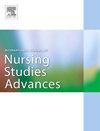Psychometric properties and content of instruments for assessing penile cancer patients’ quality of life: A systematic review
IF 3.1
Q1 NURSING
International Journal of Nursing Studies Advances
Pub Date : 2025-08-22
DOI:10.1016/j.ijnsa.2025.100412
引用次数: 0
Abstract
Aim
To describe the psychometric properties and content of the instruments used for assessing penile cancer patients’ quality of life
Design
A systematic review
Method
A systematic literature search was conducted in October 2024 across four electronic databases: PubMed, CINAHL, PsycINFO, and the Cochrane Library. The systematic approach was adhered to when conducting the review, and the Preferred Reporting Items for Systematic Reviews and Meta-Analyses guidelines were followed to ensure explicit reporting. The search across the four databases generated 135 articles, out of which 16 were included in the review.
Results
Eight instruments assessing the quality of life (QoL) among penile cancer patients were identified: four generic, two cancer-specific, and two penile cancer-specific. The content of these instruments fell into three main categories: physical functioning, psychosocial resilience, and overall life functions. However, none of the instruments covered all these aspects comprehensively. Additionally, no instrument was reported to be thoroughly valid or reliable.
Conclusions
A psychometrically tested and validated QoL instrument that covers all aspects of penile cancer patients' well-being was not found. There is a need for holistic instruments tailored to evaluate and improve the QoL for these patients. Such instruments would enable the identification and comparison of individual care needs and factors influencing their QoL.
评估阴茎癌患者生活质量的心理测量特性和仪器内容:系统综述
目的描述用于评估阴茎癌患者生活质量的心理测量学特性和内容设计系统综述方法于2024年10月在PubMed、CINAHL、PsycINFO和Cochrane Library四个电子数据库中进行系统文献检索。在进行评价时,坚持采用系统方法,并遵循系统评价和荟萃分析指南的首选报告项目,以确保明确的报告。在四个数据库中搜索产生了135篇文章,其中16篇被纳入综述。结果共有8种评估阴茎癌患者生活质量(QoL)的指标:4种一般性指标、2种特异性指标和2种阴茎癌特异性指标。这些工具的内容主要分为三大类:身体功能、社会心理复原力和整体生活功能。然而,没有一项文书全面涵盖所有这些方面。此外,没有任何仪器被报道是完全有效或可靠的。结论目前还没有一种能全面反映阴茎癌患者生活质量的心理测量方法。有必要为评估和改善这些患者的生活质量量身定制整体工具。这些工具将有助于确定和比较个人护理需求和影响其生活质量的因素。
本文章由计算机程序翻译,如有差异,请以英文原文为准。
求助全文
约1分钟内获得全文
求助全文
来源期刊

International Journal of Nursing Studies Advances
Nursing-General Nursing
CiteScore
5.80
自引率
0.00%
发文量
45
审稿时长
81 days
 求助内容:
求助内容: 应助结果提醒方式:
应助结果提醒方式:


